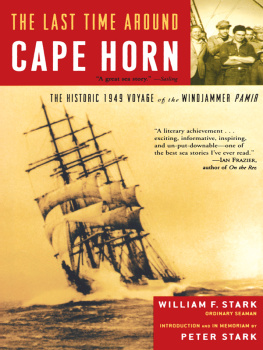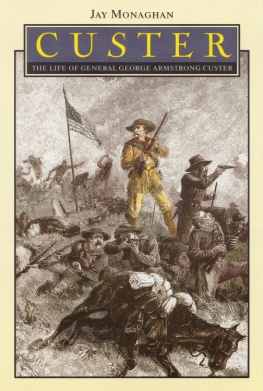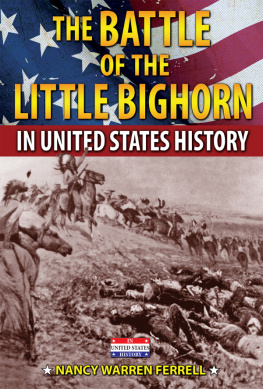
This edition is published by PICKLE PARTNERS PUBLISHINGwww.picklepartnerspublishing.com
To join our mailing list for new titles or for issues with our books picklepublishing@gmail.com
Or on Facebook
Text originally published in 1953 under the same title.
Pickle Partners Publishing 2014, all rights reserved. No part of this publication may be reproduced, stored in a retrieval system or transmitted by any means, electrical, mechanical or otherwise without the written permission of the copyright holder.
Publishers Note
Although in most cases we have retained the Authors original spelling and grammar to authentically reproduce the work of the Author and the original intent of such material, some additional notes and clarifications have been added for the modern readers benefit.
We have also made every effort to include all maps and illustrations of the original edition the limitations of formatting do not allow of including larger maps, we will upload as many of these maps as possible.
TROOPERS WITH CUSTER
Historic Incidents of the Battle of The Little Big Horn
By
E. A. BRININSTOOL
Author of
Trail Dust of a Maverick (Western Verse)
Fighting Red Clouds Warriors
Major M. A. Reno Vindicated
Campaigning With Custer and the 19th Kansas
Cavalry (with D. L. Spotts)
The Dull Knife Outbreak at Ft. Robinson in 1877
The Bozeman Trail (2 vols.) (with Dr. Grace Hebard)
The Killing of Billy the Kid
Capt. F. W. Benteens Experience in the Custer Fight
TABLE OF CONTENTS
Contents
TABLE OF CONTENTS
REQUEST FROM THE PUBLISHER
DEDICATION
To that under-paid, overworked, yet ever-dutiful body of men who paved the way for the advance of civilization through a land whose every inch was contested by the Red Man of the Plainsthe men who marched, fought, bled and sufferedthe Indian Wars Veterans.
PREFACE
There is no fiction in the contents of this volume; no lurid tales of adventure with a historical setting against a background of make-believe, such as is found on the magazine stands of today. Personally, I believe such stories do far more damage than good; they are entirely misleading to thousands of readers, and are very apt to give the rising generation a decidedly wrong impression and conception of the old-time West, and of the breed of men who composed the population of our isolated army posts and frontier settlements in the days of the wild Indian and the buffalo.
The stories contained herein are all of actual happenings and actual participants; there are no fictitious names, no colored circumstances. They are a part of the real history of the West, and for that reason I am not ashamed to place this volume in the hands of any interested boy or girl, youth or elderly person, who may desire to know the truth about one of the leading Indian battles, and other important frontier happenings pertaining thereto, and the men who played leading parts therein. Every character mentioned in each chapter was a living, breathing person, and every incident related in this book can be vouched for and verified.
The author has taken the liberty, here and there, of putting certain words and sentences in parentheses or italics, in the interest of historical accuracy or a fuller understanding of the facts on the part of the reader. Unless otherwise noted, such interpolations are the authors.
There has been altogether too much bunk written around the history of the West. Many writers have drawn on their imagination to such an extent (and the movies have aided them) and have so distorted and twisted certain historical happenings, that any attempt to straighten them out and relate the TRUTH, is almost certain to meet with much opposition. Nevertheless, the writer intends to hew to the line, let the chips fall where they may.
The Indian has been held before the young people of this country as a bloodthirsty, murderous, sneaking devil, always lying in wait for scalps, not to be trusted, and only good when dead. But the Indian was only what Uncle Sam himself made him in that respect. While the Indian is belittled, scarcely anything is said about the political parasites at Washington and elsewhere, who robbed, cheated, tricked, swindled, defrauded, deceived and imposed upon the red man at every turn.
Had Uncle Sam raised a few more thousand William Penns, the Indian would have had no excuse for taking to the warpath in retaliation for the wrongs inflicted upon him. The Indian never was bad until first made bad by his white brother, through his villainous whisky and still more villainous trickery and chicanery. Contact with the white race was the real undoing of the red man. The only wonder is that the Indian was not ten times worse than he really was, considering his unjust treatment by unscrupulous whites. He had every reason for going to the bad.
I believe that every old regular army man, in spite of what he may have received at the hands of the Indian, will agree with me in the foregoing assertion. There were too many dishonest, unprincipled Indian agents who did more to keep the regular army man out in the field, jeopardizing his life, than the great American public of this day realizes.
If these various chapters shall enlighten the reader in any manner on the last ill-fated expedition of the Seventh Cavalry, the author shall feel repaid for his hard work in gathering the actual facts.
E. A. BRININSTOOL
ILLUSTRATIONS
Officers of the Seventh Cavalry
Sitting Bull, Medicine man of the Sioux
General George A. Custer
Mitch Boyer, noted Crow scout
Looking West from Reno Hill
Gen. Custer on a hunting trip
John Burkman, Custers striker
Vic and Dandy, Custers mounts
Sioux Indians
Capt. Myles W. Keogh
Emmanuel Custer, father of the General
General George Crook
Wm. C. Slaper, member of the water detail
Capt. Thomas W. Custer
Rain-in-the-Face, prominent Sioux
Chief Gall, a Hunkpapa
Capt. Thomas W. French
Spotted Tail, Brule Sioux
Lieut. James Calhoun
Looking East across the Little Big Horn
Lieut. William W. Cooke
Capt. F. W. Benteen
Capt. E. S. Godfrey
Sgt. Kanipe, message carrier
Looking West from Weirs Point
Looking North from Renos entrenchments
Lieut. Charles A. Varnum
F. F. Girard, interpreter
Letter from Girard to his daughter
Looking East toward Renos bluffs
Capt. Myles Moylan
Old 45-70 Springfield Single Shot Carbine
Lieut. Charles C. DeRudio
Sgt. Thomas ONeil
Billy Jackson, half-breed scout
Bend in Little Big Horn river at Indian Village
Maj. M. A. Reno
Capt. George D. Wallace
Site of Renos river crossing to attack Indian Village
Two views of the Little Big Horn
Crow King, prominent Sioux leader
Trumpeter John Martin
Scene at Custer monument
Lieut. F. W. Sibley
John F. Finerty, Chicago Times correspondent
Frank Grouard, scout
Big Bat Baptiste, civilian scout
Chief Two Moon, Northern Cheyenne








